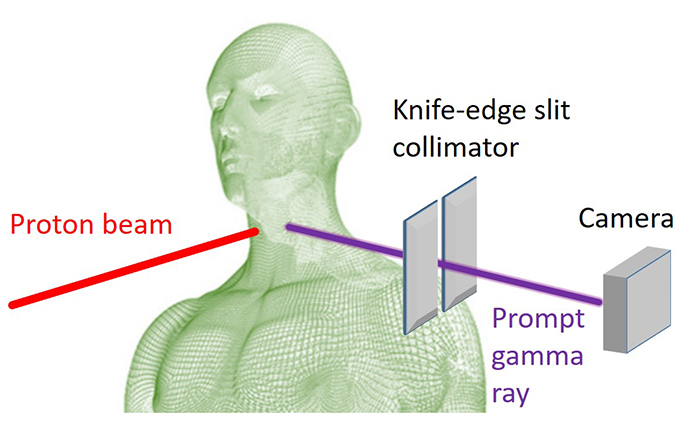Accounting for prompt gamma emission and detection for range verification in proton therapy treatment planning

Prompt Gamma (PG) imaging is one of the most promising methods for proton range verification in proton therapy, but its performance is affected by several factors, like the number of protons in the pencil beam.
OMA Fellow Liheng Tian and co-workers from the Ludwig-Maximilians-Universität (LMU) in Munich have been investigating a new treatment planning concept. Their proposal boosts the number of protons of a few pencil beams for PG imaging, selected on the basis of two indicators which quantify the conformity between the dose and prompt gamma emission.
In a paper recently published in Physics in Medicine & Biology, Liheng Tian and colleagues from LMU and the company IBA further explore this method at the detection level. In this work they report the response of a knife-edge slit prompt gamma camera which had been deployed in the first clinical application of PG monitoring in proton therapy.
The authors investigate the camera-adapted pencil beam selection method using computed tomography scans at two different treatment time points of a head and neck, and a prostate cancer patient under different scenarios.
The results show that a precision of 0.8 mm for prompt gamma falloff identification can be achieved when a pencil beam has more than 2 × 108 primary protons. The PG signals of most of the pencil beams recommended by all the indicators are observed to be reliable for proton range verification, with much smaller deviations between the inter-fractional shift of proton range than the rejected pencil beams.
The indicators proposed are shown to be valuable for identifying and recommending reliable pencil beams to create new PG monitoring-friendly treatment plans.
You can find the full article in:
Accounting for prompt gamma emission and detection for range verification in proton therapy treatment planning.
Liheng Tian, Ze Huang, Guillaume Janssens, Guillaume Landry, George Dedes, Florian Kamp, Claus Belka, Marco Pinto, Katia Parodi, Phys Med Biol 66(5), 055005 (2021).
https://doi.org/10.1088/1361-6560/abc939